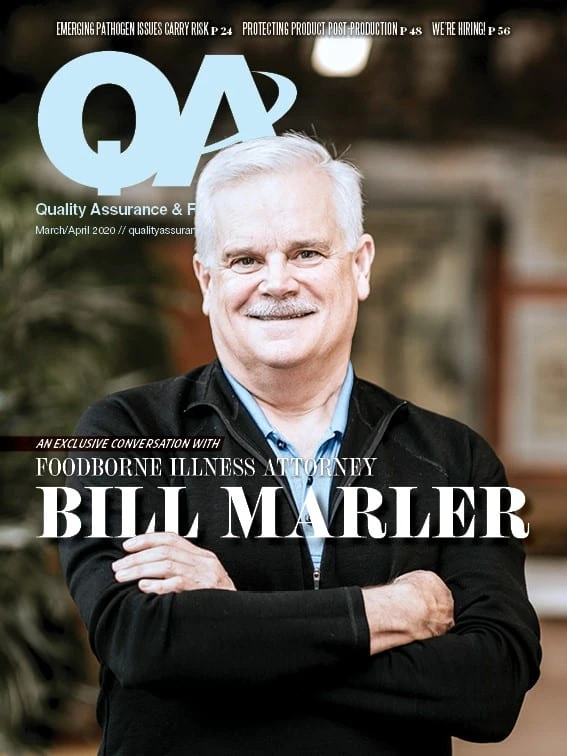
“Food safety is not a competitive advantage.” This mantra is known far and wide to even the newest of food safety professionals. Food safety professionals are active on work groups and executive committees where we collaboratively (and genuinely) interface with competing companies and organizations, usually for causes dedicated to the prevention of foodborne illness and betterment of public health. But how often are we truly laying it all out on the table, and opening ourselves up for constructive criticism from adversaries and regulators alike?
Shortly after the June 2019 Salmonella Uganda outbreak in papaya of Mexican origin (the eighth of its type since 2011), a statement issued by FDA put the papaya industry on high alert. The statement delivered a stern call for the outbreak trend to stop, and for the industry to “make all necessary changes to strengthen public health safeguards.” The resulting industry partnership can serve as a model for all food safety professionals and industry members for years to come.
This summer, the Texas International Produce Association convened some papaya importers to discuss the current state of the industry and brainstorm a path forward. After presenting these ideas to FDA in September, a broader stakeholder group (40 individuals representing growers, packers, exporters, importers, customs brokers, distributors, retailers, academics, associations, government representatives, and service providers) came together to focus on identifying the known and presumed risk factors associated with the growing, handling, and packing of papaya of Mexican origin. Detailed, sometimes invasive questions were asked of growers; comparisons made of produce with similar handling procedures; and challenges raised regarding the dearth of publicly available food safety research for papaya — all in an effort to understand the unique aspects of the papaya industry, and to elucidate potential causes resulting in a pattern of outbreaks faced by the industry.
The industry, academia, and government working group deliberated best practices and alternative practices to develop a minimum set of food safety expectations for buyers of imported papayas. In a show of further collaboration, the working group managed to overcome language barriers, with partners in the FDA Latin America office serving as point persons and translators to facilitate the participation of the Mexican National Service of Health, Safety, and Food Quality (SENASICA). Considering both the competitive and regulatory participation, you may have expected industry members to offer vague and generic information and give the “right” answer. Instead, we found an industry with complete recognition and acceptance of an issue, who not only wanted to do what was right and necessary for their company to avoid future outbreaks, but to strategize on efforts that could ensure that the entire industry would move forward right alongside them.
As word of this industry undertaking spread, requests for reference research articles blossomed into additional avenues of collaboration — now extending to the USDA Agricultural Research Service, whose ability and willingness to pursue much needed research on antimicrobial use in papaya wash water, as well as on potential avenues for cross-contamination in certain post-harvest practices, is laudable.
As the best practices document becomes finalized through a lightning-fast turnaround process in anticipation of the upcoming growing season, it will have undergone technical review from volunteer university and extension collaborators on both sides of the border, practical review by the very grower and packers to eventually implement the practices, and input from buyers, with the full participation of FDA and SENASICA.
For as much effort as has been expended by the working group, this is only the beginning. By mid-April, the stakeholder group (now expanded to an invitation list of more than 100 individuals) will have met to discuss implementation and education strategies to continue moving the industry forward and break the pattern of outbreaks.
It has truly been awe-inspiring to see industry, academia, and regulators come together so candidly in matters of mutual interest of food safety and public health. On June 4, 2020, United Fresh will host a free webinar detailing more about how these groups are working together for a common cause.

Explore the March April 2020 Issue
Check out more from this issue and find your next story to read.
Latest from Quality Assurance & Food Safety
- Chef Robotics Introduces Pat-Down Capability for Meal Presentation and Sealing
- USDA Launches Regenerative Pilot Program
- Indoor Ag-Con Adds Food Safety Track to Conference Lineup
- IDFA Recognizes Federal Officials for Support of U.S. Dairy Industry
- Tetra Pak Acquires Bioreactors.net
- Fresh Del Monte Receives Rabobank Leadership Award
- São Paulo Earns Guinness World Record for Largest Municipal Food Security Program
- KPM Analytics Releases Ready-to-Use NIR Calibration Packages





